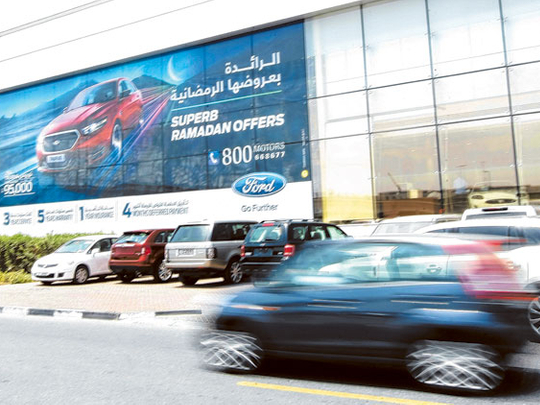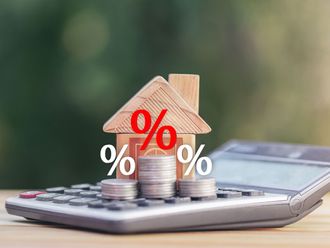
Dubai: After an extended turbo-fuelled run since 2009, the UAE’s automotive retail sector is settling in for a more sedate growth phase. Even then, it would be enough to place it among the fastest growing automotive markets in the world and with enough going around to keep manufacturers and dealerships interested. (And there are more of them joining in as Chinese carmakers pursue openings to park themselves prominently in the UAE and other Gulf markets.)
UAE’s car sales in the year to May recorded a growth of 12 per cent compared with the same period last year. For the whole of 2013, just over 360,800 vehicles headed off from local showrooms into private garages or absorbed by fleet operators.
“Volumes attained in 2013 were built on a 16 per cent year-on-year growth, but in the first five months of 2014 we have seen that slow down to 12,” said Michel Ayat, CEO of Arabian Automobiles. “For the full year, it could be around the 10 per cent mark and push it past the 400,000 units mark.
“The industry had packed in a combined 65 per cent growth in the last three years and everyone is aware that maintaining it would be impossible. But even 10 per cent is exceptional when you consider the rest of the world — growth in most markets are either flat or in negative territory. Only a few markets are growing and that too in single-digit terms.”
Independent findings confirm the picture. According to a report released by the consultancy Alix Partners, the global automotive industry faces “at best uncertain times ahead”. Even a stellar market such as China’s could see growth taper to 6.3 per cent in the next five years against the 17.6 it maintained over the last decade.
But when it comes to the Middle East and North Africa markets, there is a “promising future” with growth over the next five years projected at 7 per cent. According to AlixPartners, the overall Mena market totalled vehicle sales of 1.9 million units in 2013 with Saudi Arabia, the UAE and Egypt accounting for 58 per cent (1.1 million units).
Competitive arena
“Mena sales now equal about 11 per cent of the Europe’s sales volume, and this market is growing faster than many others, becoming an interesting competitive arena for growth opportunities,” said Eugenio Berenga, managing director at AlixPartners. “The big question (for carmakers) is how those markets should be approached, and will it be possible to scale up volumes profitably?”
Specific to the UAE, how future demand will pan out is clear enough. The population base has been expanding as a new wave of expatriates seek opportunities to further their prospects. For the existing resident base, the signs of improving salary packages and incentives are being seen, and which could be an incentive to hike their discretionary spending.
Interestingly, industry sources say that the incentive to buy a new vehicle or upgrade to a more expensive one will be competing with the higher rentals many of the residents will have to shell out. Clearly, the concern over rental costs and how much it impacts on budgets is not confined to the individual alone. (It may be no accident that UAE residents splurged more on new and costlier car buying during 2010 and 2011 than was the industry norm. In those two years, rentals were yet to recover from the lows brought on in the aftermath of the financial crisis.)
But the industry is simultaneously looking beyond the immediate. “There is demand picking up to supply government fleets and the big orders should be coming soon,” said Ayat. “The hotels and other big buyers are already making those orders.
“Between now and to the end of the decade, maintaining a steady 10 per cent should not be a problem for auto retailers and that would be enough to clear the 700,000 units a year mark by then.”












